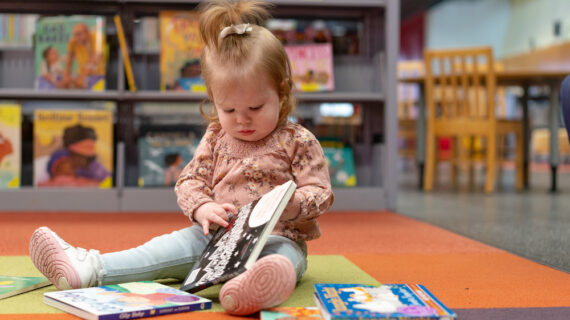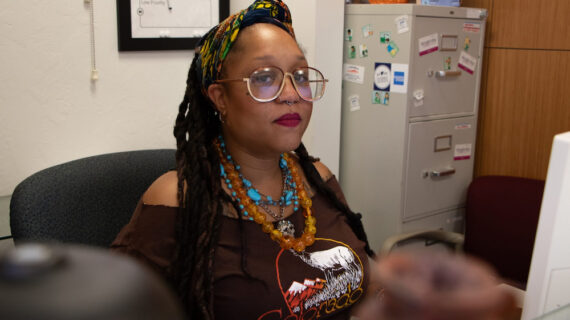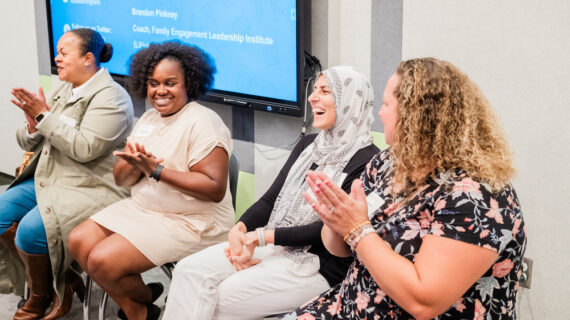
Got questions about babies and speech? We’ve got answers.
Photo above by Juan Encalada via Unsplash.
First words are often a major milestone in a baby’s development. But from infant cooing to preschool singing, babies and toddlers develop at different rates – including the pace at which they acquire different aspects of language.
When a child doesn’t seem to be speaking on schedule, it can be confusing for parents to know whether their child needs extra support. How does a parent know when there’s an issue that needs attention and where do they go to seek advice?
“If children aren’t progressing somewhere in the normal range toward speech, then there could be a number of things wrong, or there could be nothing wrong,” said Kate DeAntonis, a pediatric hospitalist with Allegheny Health Network.
Sometimes it’s just situational – an older sibling who overruns the conversation or other family dynamics impact whether a toddler begins talking. Or a child could have a hearing problem, which is screened for during the newborn period but could be a potential cause of speech delay if it was missed.
Here are guidelines for what experts consider within the normal range of progress and what may warrant further evaluation:
Within two weeks of birth: Most babies will be making sounds, vocalizing and start to “coo” with vowel sounds.
At 4 to 6 months (sometimes earlier): Babies begin adding consonants, usually “m,” “b” and “d” sounds. This is what many people call “babbling.” Babies then build on their babbling for the rest of their first year. This, says Dr. DeAntonis, is when “parents can discern that they’re calling a certain caregiver ‘mama’ or ‘dada.’”
At age 1: The child will be using a handful of very simple words.
By 15 months: The child will say a very solid but limited group of terms.
At 18 months: The number of words a toddler uses may have quadrupled to 10 or 15 words or syllables that have “word-like” meaning.
At 1 ½ years: Toddlers should have about 50 words or “word-like” sounds they use to communicate.
At 2 years old: The number of words a child is using can reach about 200 or more words.
Many parents don’t count the words their child uses, but it can be valuable.
“I’ll tell parents to put a paper on the refrigerator, and every time you think your child says a word that has meaning (like banana), write it down, and you’ll see how long that list grows pretty readily,” Dr. DeAntonis says.
When should you start early intervention?
If speech delay is a concern, your pediatrician can make a referral for speech and language therapy. Many referrals occur between ages 2 and 3, but can be also between ages 1 and 2.
“Typically, the pediatrician will refer (parents) to our local intervention program which is administered by the Allegheny Intermediate Unit,” Dr. DeAntonis says.

Once the referral is made, here is how you can connect with a speech and language therapist:
1. In Allegheny County, the parents and caregivers get a referral to contact the Alliance for Infants and Toddlers (the local agency that oversees the different types of service coordinators who will come to your home).
2. The service coordinators do an initial visit to discuss concerns with parents and they determine what type of therapist is needed. Then they bring an independent assessment team, including the therapist, to the home to do the initial evaluation. “The therapists that do the assessments are not the same therapists that do the treatment,” says Maureen O’Brien, a speech and language pathologist for Teis, an independent early intervention therapy provider.
3. The therapist with the independent company will begin to visit the families and discuss the types of communication the child is currently using and what kind of communication the family needs them to be using. Typically, a therapist will start by meeting with a child in their home once a week. Those visits may decrease as things progress. (If the problem needs a lot of attention, there could be twice weekly meetings. But that is rare.)
What will the therapist look for?
“One of the first things, from a speech perspective, that I’m looking for is play skills,” O’Brien says.
The therapist will observe how the child interacts with toys and with parents or other caregivers, and notice whether the child uses gestures or other forms of communication instead of speech. Some children will make up their own gestures to communicate.
“Using nonverbal communication is considered a step in the process to using verbal communication,” Dr. DeAntonis said. “It’s not considered a bad thing if kids gesture a lot. That’s actually considered a good thing.”
Parents can use a child’s nonverbal communication to build on language. For example, if the child bumps their head, the parent might say, “That’s your head!”
“Every time your child indicates something nonverbal, then you add the language that you would be using to that interaction,” she says.
The therapist will also ask if the child is frequently screaming or there are tantrums. How is the parent responding, and what kinds of things may be triggering this behavior? Is the child pulling at the parent to show them what they want?
The therapist will also discuss bedtime, bath time, diaper changing, picking up a sibling from the bus and other routines. How does communication happen in these moments, since the day typically doesn’t consist of the parent sitting on the floor with the child, playing.
How can parents and caregivers support speech development?
Narrating what’s happening during the day is important. When a child isn’t speaking, some parents don’t talk much to the child because they aren’t getting a response back. Using words throughout the day is one of the biggest predictors of language development and academic success, especially during the birth to age 5 period. So talk to your child throughout the day about anything and everything, even if they won’t understand most of the words you’re using. “While you’re in the car, pushing the stroller, you can be running a commentary that is engaging to your child,” Dr. DeAntonis says.
Select board books for babies with pages that aren’t too busy. That way, the child can focus on simple pictures on each page and you can talk about those pictures. If you are trying to teach new words, simple illustrations and targeted topics can help.
Ask questions, like “Where is your nose?” and encourage the child to touch their nose or try to repeat the word “nose.” Or ask, “What’s in the tree?” and then give them time to answer. They may say, “bird” or something that sounds like that, or “green” if they see leaves and are beginning to learn colors. Be patient for children to supply an answer.
Play interactive games, like nursery thymes and hand chapping games, that add words. “Songs are vastly important in both the child’s quality of life and also their speech acquisition,” Dr. DeAntonis said.
One last piece of advice: Don’t wait a long time to get your child evaluated. If parents have a concern, they should go through the steps above to address that concern, starting with the pediatrician’s office.
Then, says Dr. DeAntonis, “at some point if you are reasonably assured that your child is falling within the normal range, you can just work with them on their abilities.”
Also know that if a child is evaluated and you’re told there is no cause for concern, you can always pursue reevaluation later, if progress doesn’t continue.















